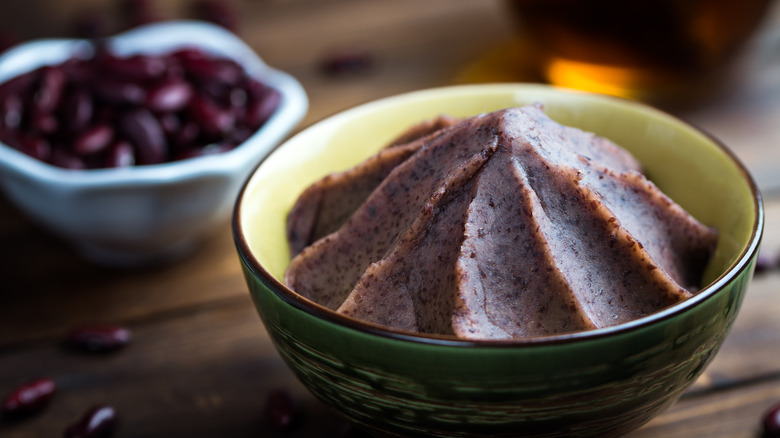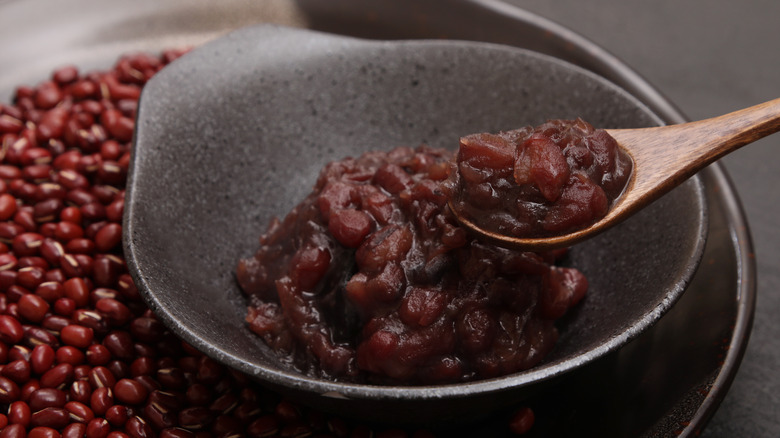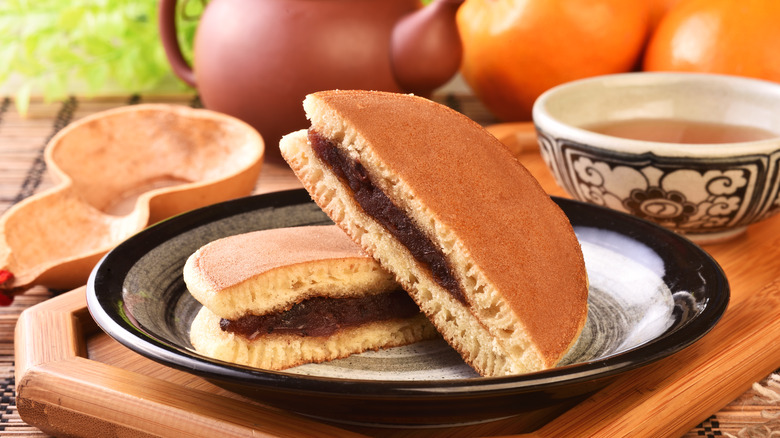What Is Sweet Red Bean Paste And How Is It Used?
Sweet red bean paste, one of the most beloved ingredients in Asian cuisine, is slowly making its way into the Western world. Also known as anko or dou sha, this versatile filling goes well with mooncakes, pastries, and other desserts, giving them a nutty flavor. It's also an essential ingredient in sweet rice pudding, sticky rice cakes, dumplings, and other traditional Asian foods that are said to bring good luck in the New Year.
Just like soba, a Japanese New Year's tradition that involves eating buckwheat noodles to attract prosperity and good health, red beans are associated with fortune. For this reason, Japanese people use them to make a filling for sticky rice cakes, a key ingredient in Ozohni mochi, a New Year's soup that symbolizes joy, health, and abundance. Similarly, Koreans eat red bean paste to protect themselves from evil spirits. This ingredient is also a key component of chapssaltteok, a Korean dessert associated with good luck.
Whether enjoyed as a filling in steamed buns or used as a topping for shaved ice, anko can add a new dimension to your recipes. Plus, it requires just two or three ingredients and takes minutes to prepare.
How to make sweet red bean paste
With its creamy texture, red bean paste is suitable for a multitude of desserts. Its flavor is sweet and savory at the same time, with notes of chocolate and walnuts. Depending on your preferences, you can make smooth or mashed anko and try different recipes. For example, Tsubu-an is made with whole red beans and has a chunky texture, whereas Koshi-an and Tsubushi-an require crushing the beans. Some recipes call for chestnuts, white beans, raw honey, butter, and other ingredients.
One way to make sweet red bean paste is to boil adzuki beans in a pot and then cook them for about five minutes. Next, drain the beans and transfer them to a saucepan. Add enough water to cover them, bring to a boil, and simmer the beans until soft. Drain them again, place them in the saucepan, add sugar or honey, and cook them for 10 minutes or so. Let the paste cool and enjoy.
Another option is to soak the beans overnight, which will help reduce the cooking time. After that, bring them to a boil and then simmer them until soft. Drain the beans, blend them until smooth, and mix them with sugar. Last, fry them in oil while mashing them with a fork or spatula. Feel free to add a pinch of salt, cornstarch, dark brown sugar, or walnuts. You may also use butter or coconut oil for a creamier texture, or lye water (kansui) for a deeper color.
What's the best way to use anko?
Anko is traditionally used in desserts and some savory dishes, such as fried rice, stews, and steamed buns. Taiyaki, for instance, is a waffle-like dessert filled with sweet red bean paste. The dough is made with flour, whole milk, eggs, sugar, and baking soda. If you love pancakes, consider starting your day with Dorayaki. This fluffy dessert consists of two pancakes glued together with anko. You'll also need eggs, sugar, honey, flour, and baking powder.
Red bean paste can also be a wonderful addition to matcha ice cream, Japanese sweet rolls, red bean pudding, and soups. For example, you can add it to beef noodle soup recipes for extra flavor and nutrition. That's right — adzuki beans are loaded with nutrients, offering more than 17 grams of fiber and 21 grams of protein per 3.5-ounce serving.
As far as storage goes, your best bet is to transfer the paste to an airtight container and place it in the fridge. Consume it within one week, or freeze it for up to one month. If you have a large batch of anko, use it in cookies, cakes, popsicles, dumplings, sandwiches, waffles, and other everyday dishes. Your imagination is the only limit.


